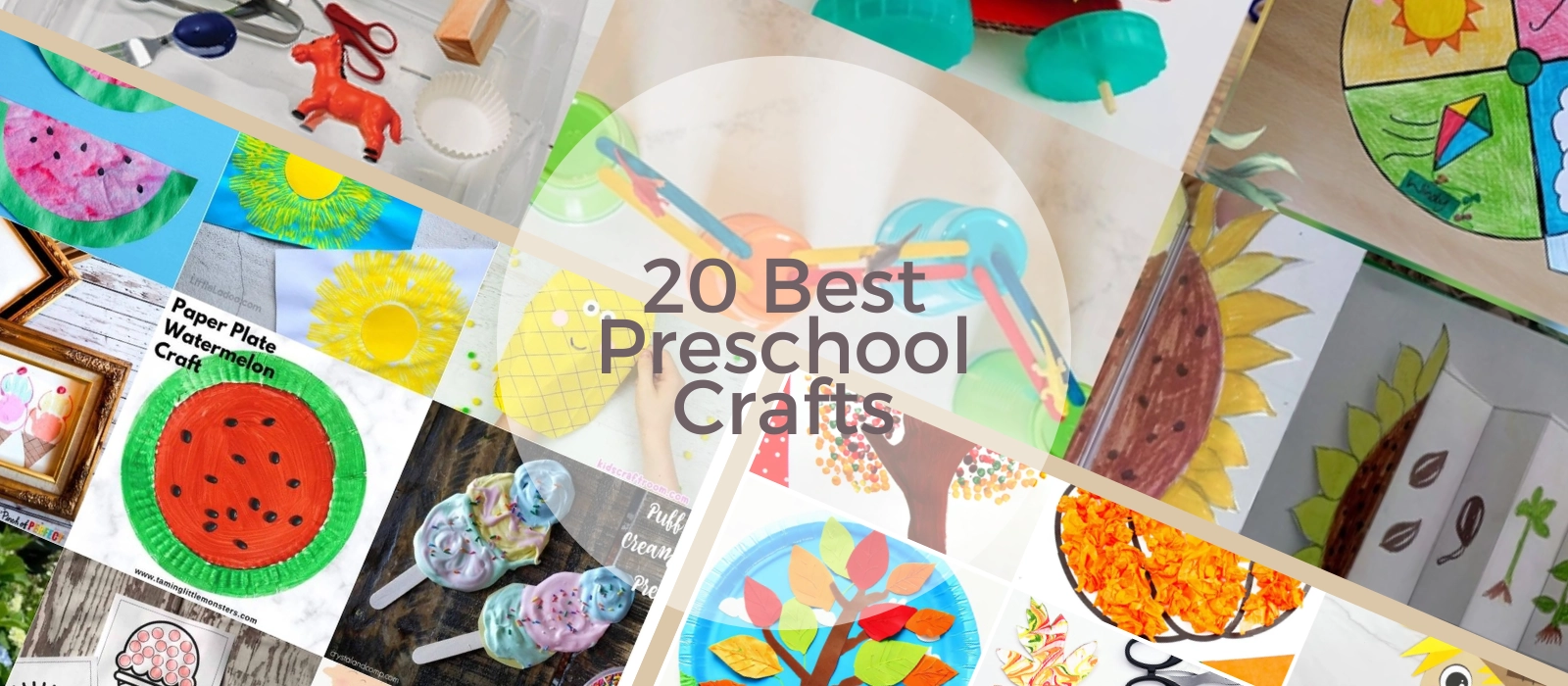Have you ever looked around your classroom and felt the children’s energy was bubbling over, but your usual activities just weren’t holding their attention? Do you ever struggle to find craft ideas that are easy to prepare, safe for small hands, and still deliver real learning value? And what about those days when you’re short on budget, but you still want something new, exciting, and unforgettable for your preschoolers?
The good news is, preschool crafts can be both engaging and educational without draining your time or resources. With the right ideas, they can improve fine motor skills, boost creativity, and create moments your students and their parents will remember for years.
I’ve spent years working with teachers, sourcing classroom materials, and observing how the best preschools use crafts—not as a time filler, but as a core learning tool. What I’m sharing here isn’t just a Pinterest collection; these are 20 tested, classroom-friendly preschool crafts that I’ve seen work, time and again, in real early childhood settings.
Why Preschool Crafts Matter for Early Childhood Development
Over the years, visiting preschools, supplying classrooms, and talking with teachers, I’ve noticed something interesting. In almost every classroom, there’s a little corner filled with children’s handmade pieces. Sometimes it’s a crumpled paper cat. Other times, it’s a rock covered in messy, bright paint. Many people see them as “cute extras,” but they’re much more than that.
Last month in a private preschool in Vancouver, I saw a four-year-old boy working with scissors, cutting strips of colored paper. His tongue peeked out between his lips, and he was completely focused. He wasn’t “just cutting” — he was strengthening the small muscles in his hands, the same ones he’ll need for holding a pencil, fastening a coat, or tying shoelaces.
Another time, in a bilingual preschool in Shanghai, I watched a group of children make leaf collages. They first went outside to find leaves, then came back to sort them by color and size before gluing them onto paper. Some kids counted the red leaves, others grouped the similar-sized ones together. Without realizing it, they were practicing classification, sequencing, and comparing — the building blocks of early math.
Crafts also do something wonderful for social skills. In a class mural project, one child might paint the background, another glues on shapes, and someone else passes around the glue sticks. Sure, there are small arguments and moments of impatience, but that’s how children learn cooperation, sharing, and even negotiation.
My favorite part? Seeing kids “speak” through their creations. A little girl once painted an entire sheet in shades of blue. When her teacher asked why, she simply said, “Because today the sky is big.” That’s the magic of preschool crafts — giving children a voice that isn’t limited by vocabulary.
To me, preschool crafts have never been just a way to fill time between lessons. They’re a visible, tangible part of a child’s growth. They bring warmth, color, and a sense of pride to the classroom that no worksheet can match.
Essential Materials for Preschool Crafts
If you’ve ever tried to start a preschool craft without the right materials, you know the chaos that follows. Someone’s missing glue, the scissors aren’t cutting, half the markers are dry, and suddenly the class energy turns from excited to frustrated. I’ve seen it happen more than once — and it’s never pretty.
That’s why I believe in keeping a “craft pantry” in every classroom. Not a literal pantry, but a storage area that’s always stocked with the basics. Think of it like a kitchen — if you’ve got flour, sugar, eggs, and butter, you can make a dozen different recipes. The same goes for craft supplies.
Here’s what I recommend every preschool keep on hand:
- Paper, lots of it. Colored construction paper, plain white sheets, and maybe some textured or patterned ones. Buy in bulk from reliable school supply wholesalers — it’s cheaper and you’ll never run out in the middle of a project.
- Child-safe scissors. Enough for every child in the group, plus a couple of extras. Dull scissors can frustrate kids, so check them regularly.
- Glue sticks and non-toxic liquid glue. Glue sticks are less messy, but sometimes liquid glue is the only way to hold heavier items.
- Washable markers, crayons, and colored pencils. Make sure they’re easy to wash off clothes and skin. I learned this the hard way after seeing a little boy go home with bright green hands.
- Paint supplies. Tempera paints, watercolors, brushes in different sizes, and aprons or old shirts to protect clothing.
- Recyclable odds and ends. Bottle caps, cardboard tubes, fabric scraps, egg cartons — you’d be amazed what kids can create with these.
- Safety items. Wet wipes, hand sanitizer, and table covers. Crafts are fun, but cleanup should be easy too.
One teacher I know in Toronto even has a “mystery box” filled with random safe materials — ribbons, shells, beads, buttons. She pulls it out when the kids need a surprise challenge, and it’s incredible to see how creative they get.
The truth is, having the right materials ready not only makes crafts run smoothly, it also makes them more spontaneous. If inspiration strikes on a rainy morning, you can get started in minutes without hunting for supplies or changing the plan.
20+ Preschool Crafts Every Teacher Should Try This Year
🎨 Art & Painting Crafts
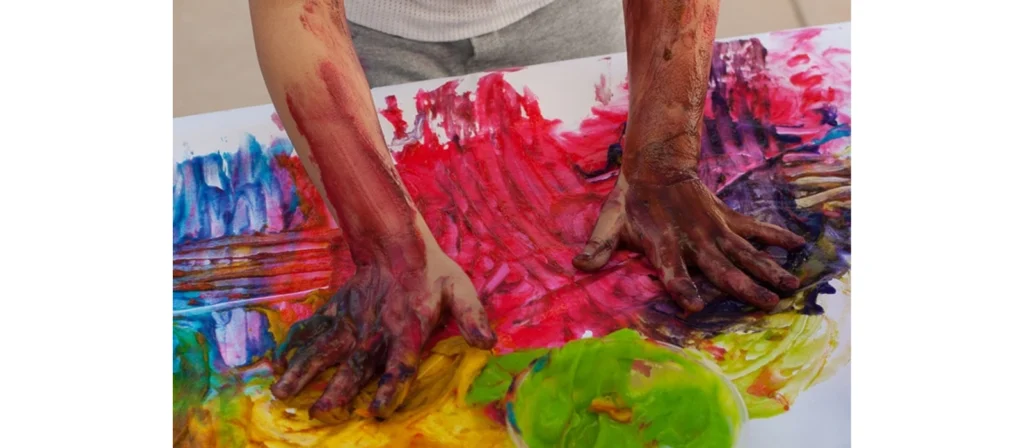
1. Finger Painting Story Mats
I first discovered this idea during a visit to a preschool in Melbourne, and it immediately stood out as one of those preschool crafts that teachers keep coming back to. The setup is simple, but the learning value is huge. Children aren’t just smearing paint on paper — they’re creating the backdrop for a story they will later tell.
Ages: 3–5
Materials: Large sheets of thick paper (so the paint doesn’t soak through), washable finger paints in primary and secondary colors, aprons or oversized shirts, table covers, and a drying rack.
Steps:
- Cover tables with plastic cloths or butcher paper to make cleanup easier.
- Pour small amounts of different paint colors into shallow trays.
- Invite children to use their fingers to create landscapes: rolling hills, ocean waves, starry skies, forests.
- Let the paintings dry completely.
- The next day, provide cut-out shapes, crayons, or stickers so children can add characters or props to their painted scenes.
- Each child tells a short story based on their “story mat.”
Safety Tip: Always supervise closely, especially with younger preschoolers who might be tempted to taste the paint. Keep a warm water handwashing station nearby so cleanup is quick and stress-free.
Why It Works: This preschool craft blends sensory play, creativity, and storytelling. It builds fine motor skills, strengthens hand-eye coordination, and supports early literacy when children share their stories with the group.
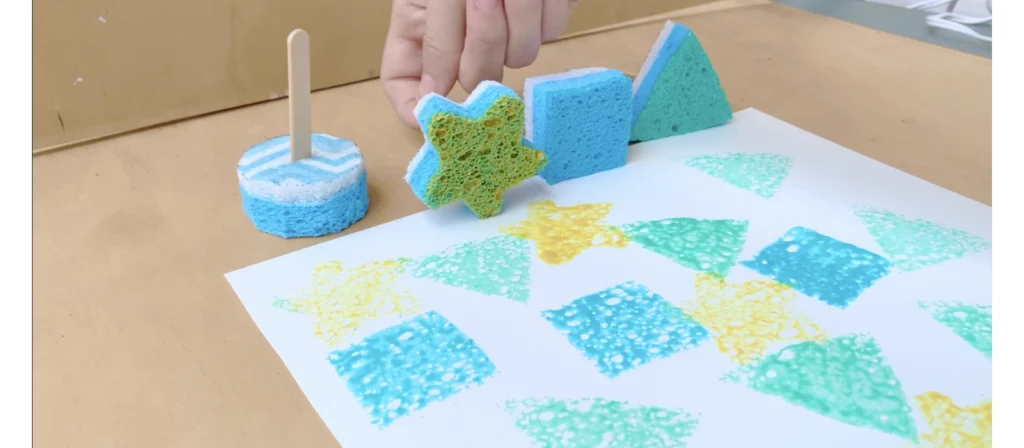
2. Sponge Stamping Shapes
This is one of those preschool crafts that takes almost no prep time but delivers big results in learning. It’s perfect for teaching shapes, patterns, and color recognition. I’ve seen teachers use this as a rainy-day activity that calms the room while still keeping kids engaged.
Ages: 3–4
Materials: Soft sponges (cut into circles, triangles, squares, stars), non-toxic washable paint, shallow trays, large sheets of paper, and paper towels for quick cleanups.
Steps:
- Cut sponges into simple shapes ahead of time.
- Pour a small amount of paint into trays.
- Show children how to dip the sponge lightly into the paint — too much paint will make the shapes blur.
- Let children stamp shapes onto paper in any arrangement they like.
- For older preschoolers, encourage them to make repeating patterns or stamp a sequence (circle-square-triangle, repeat).
Safety Tip: Pre-cutting the sponges ensures no sharp scissors are in children’s hands.
Why It Works: This preschool craft teaches visual recognition, introduces pattern concepts, and builds motor control. It also lets kids experiment with spacing and design without the frustration of freehand drawing.
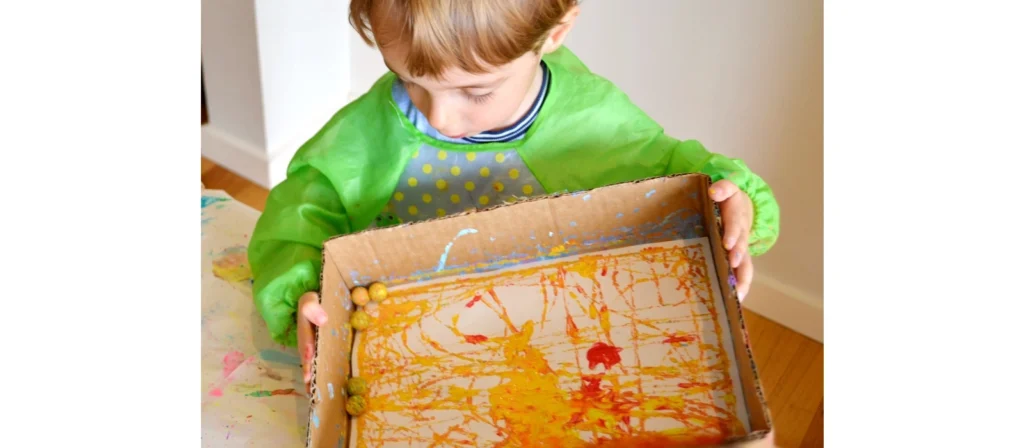
3. Marble Rolling Rainbow Art
This one’s slightly messy but always a hit. Children love the unpredictable streaks of color, and it’s a great way to introduce some simple science into your preschool crafts.
Ages: 4–5
Materials: Marbles, washable paint, shallow trays or boxes, paper cut to fit the bottom of the tray, spoons or tongs (optional for handling marbles).
Steps:
- Place the paper in the tray so it covers the bottom.
- Dip marbles into different paint colors — use a spoon or tongs for hygiene and safety.
- Drop the marbles onto the paper.
- Children tilt the tray back and forth, letting the marbles roll and leave colorful streaks.
- Rotate the paper and repeat with different colors for a layered rainbow effect.
Safety Tip: Marbles are a choking hazard. Keep them in a controlled space and ensure they never go into mouths.
Why It Works: Beyond the visual appeal, this preschool craft demonstrates gravity, motion, and cause-and-effect. It encourages problem-solving as children figure out how to tilt the tray to create the patterns they want.

4. Watercolor Salt Paintings
A favorite among teachers who like to mix art and science in their preschool crafts. The salt absorbs the water and creates beautiful crystalline textures that fascinate children.
Ages: 4–5
Materials: Watercolor paints, brushes, cups of clean water, coarse salt, and thick paper.
Steps:
- Give each child a sheet of paper and let them paint freely with watercolors.
- While the paint is still wet, sprinkle coarse salt over the artwork.
- Watch together as the salt pulls in the pigment, creating unique patterns.
- Shake off the salt once the painting is dry.
Safety Tip: Use coarse salt to avoid fine dust, which can irritate eyes and noses.
Why It Works: This preschool craft offers instant visual feedback, keeping kids curious and engaged. It introduces basic chemistry concepts and allows for creative exploration without rigid rules.
🍃 Nature & Outdoor Crafts

5. Leaf Collage Seasons Chart
One of the simplest preschool crafts, but also one of the most meaningful. I saw this in a preschool in British Columbia where the seasons are very distinct. The teacher had children collect leaves during each season, then turn them into a visual “Seasons Chart.”
Ages: 3–5
Materials: A variety of leaves (different colors and sizes), large poster board, glue sticks, markers, and labels for each season.
Steps:
- Take children outside to collect leaves. Depending on the season, this might mean bright reds and oranges in autumn, or fresh greens in spring.
- Back in the classroom, sort the leaves by color and texture.
- Glue the leaves onto sections of the poster board labeled “Spring,” “Summer,” “Autumn,” and “Winter.”
- Add hand-drawn decorations or written notes from the children about each season.
Safety Tip: Check that the leaves are clean and free from mold or insects before using.
Why It Works: This preschool craft connects children with nature and builds observation skills. It can also become an ongoing classroom display that changes as the year progresses.
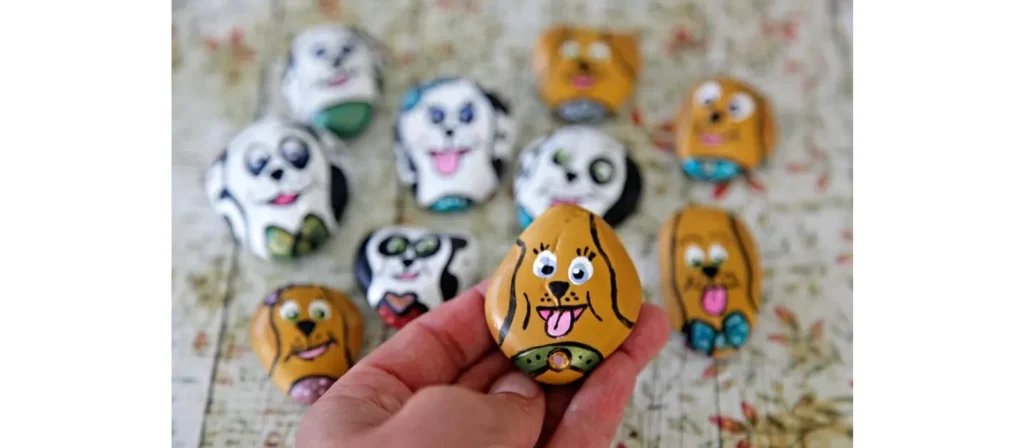
6. Rock Painting Pet Project
I’ve yet to meet a preschooler who doesn’t love this one. Children choose a rock, paint it, and turn it into their own “pet” — complete with a name and personality.
Ages: 3–5
Materials: Smooth, clean rocks, acrylic or tempera paint, paintbrushes, googly eyes, glue, and small boxes or paper bags for “pet homes.”
Steps:
- Wash the rocks ahead of time so the paint sticks well.
- Provide paints and brushes so children can decorate their rock as they like — spots, stripes, even superhero themes.
- Glue on googly eyes once the paint is dry.
- Have each child name their pet and make a little “home” for it from a box or bag.
Safety Tip: Supervise closely when handling small googly eyes to avoid choking hazards.
Why It Works: This preschool craft gives children ownership and pride. It encourages creativity, but also social interaction as kids introduce their “pets” to one another.
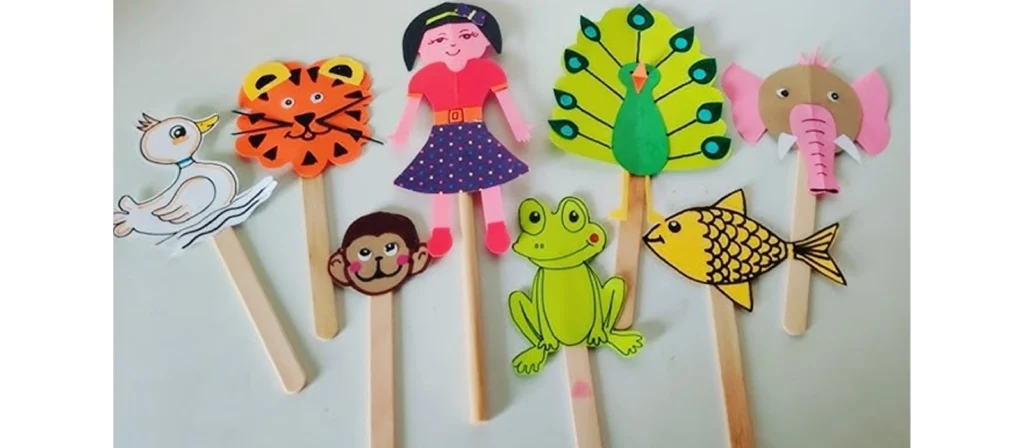
7. Stick Puppets Storytelling
This is a craft and an instant storytelling prop all in one. I’ve seen entire preschool circle times transformed because the children had puppets they made themselves.
Ages: 4–5
Materials: Clean sticks (or popsicle sticks), cardboard or cardstock, markers, scissors, glue, and optional fabric scraps for costumes.
Steps:
- Help children draw or trace simple characters (animals, people, or fantasy creatures) onto cardboard.
- Cut them out — the teacher or older children can handle tricky parts.
- Decorate with markers, fabric, and yarn for hair.
- Glue each character to a stick handle.
- Use them immediately for a group storytelling session.
Safety Tip: Make sure sticks are smooth and free of splinters. Sand any rough edges before giving them to children.
Why It Works: This preschool craft blends art with language development. It gives children a reason to speak, act, and collaborate.
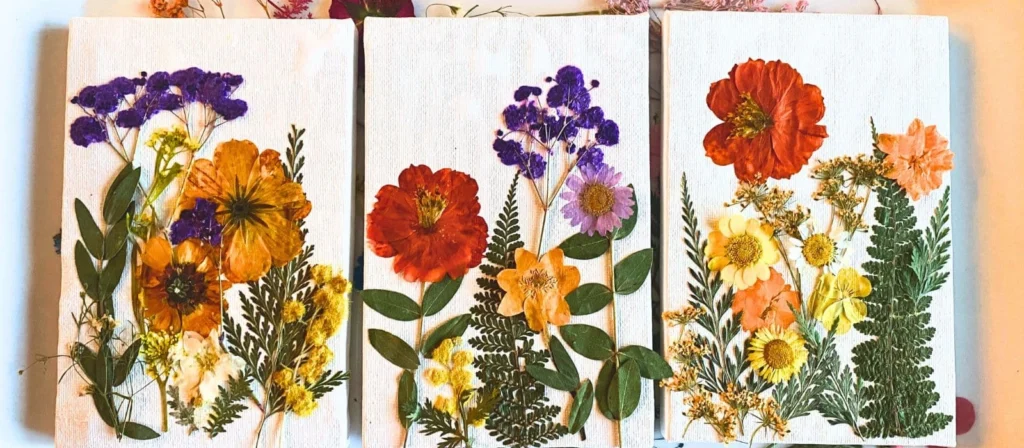
8. Flower Press Art
A gentle, calm activity that produces beautiful, lasting results. Pressed flowers can be turned into bookmarks, greeting cards, or framed art for parents.
Ages: 4–5
Materials: Fresh flowers, heavy books or a flower press, paper, glue, and blank cards or small frames.
Steps:
- Take children outside to pick a few flowers (be mindful of which ones are safe to pick).
- Place the flowers between sheets of absorbent paper, then press them in a heavy book for several days.
- Once dried, glue them onto cards or paper.
- Add drawn stems or written messages to finish.
Safety Tip: Avoid flowers that could trigger allergies.
Why It Works: This preschool craft teaches patience and delayed gratification, as children have to wait to see the results. It also connects them to natural beauty in a hands-on way.
🎉 Seasonal & Holiday Crafts

9. Easter Egg Shakers
This is a preschool craft that combines art and music, perfect for springtime or Easter celebrations. The end result is a colorful egg-shaped shaker that children can decorate and then use in a music activity.
Ages: 3–5
Materials: Plastic fillable eggs (available at most craft or dollar stores), dry rice or beans, tape, paint markers or stickers, and optional ribbons.
Steps:
- Pre-fill each plastic egg halfway with rice or beans. This gives a nice rattling sound without being too heavy.
- Seal the eggs securely with a strip of colorful tape to prevent them from opening.
- Provide paint markers, stickers, or washi tape so children can decorate the outside.
- Once finished, have a short “music circle” where the children play their shakers along to a simple song.
Safety Tip: Make sure the eggs are sealed tightly, as small parts like rice can be a choking hazard if spilled.
Why It Works: This preschool craft not only lets children express creativity through decoration but also introduces rhythm and musical play.

10. Halloween Paper Plate Masks
A fun, dramatic craft that also works beautifully for pretend play. Children make their own Halloween masks and then have the option to act out short scenes or stories.
Ages: 3–5
Materials: Sturdy paper plates, child-safe scissors, elastic bands or yarn, markers, paint, feathers, glitter, and glue.
Steps:
- Cut eye holes in the paper plates beforehand for younger children. Older preschoolers can do this step with supervision.
- Decide on a mask theme — spooky (ghosts, bats), cute (pumpkins, cats), or imaginative creatures.
- Let children decorate using paint, markers, and craft embellishments.
- Once dry, punch holes on the sides and tie elastic bands so the mask can be worn.
Safety Tip: Ensure the masks fit comfortably and that the elastic isn’t too tight.
Why It Works: This preschool craft promotes imaginative play and storytelling. It’s also a great group activity for a themed classroom party.
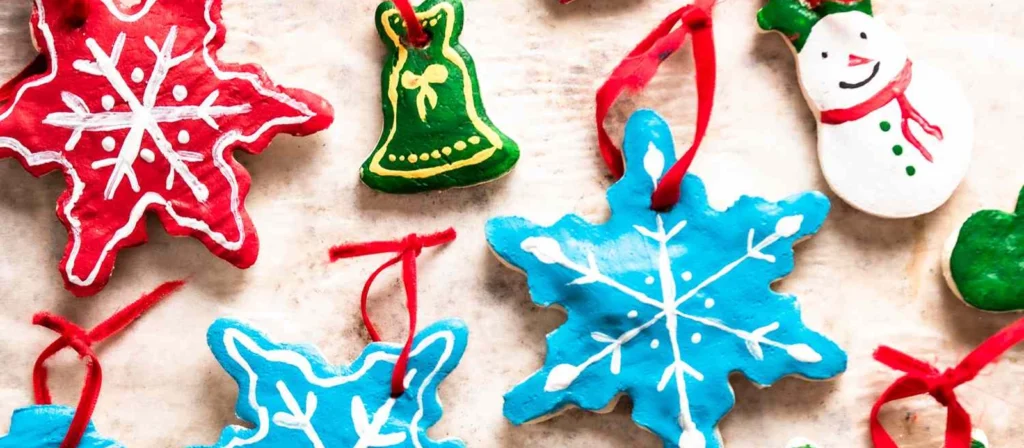
11. Christmas Ornament Dough Crafts
A festive favorite that can become a keepsake for parents. Children make ornaments from salt dough, paint them, and take them home as holiday gifts.
Ages: 4–5
Materials: Salt dough (mix 2 cups flour, 1 cup salt, and 1 cup water), rolling pins, cookie cutters, paint, brushes, and ribbon.
Steps:
- Prepare the dough ahead of time or make it as a group activity.
- Roll out the dough to about 1 cm thick.
- Use cookie cutters to make holiday shapes — stars, trees, bells.
- Poke a small hole at the top for hanging.
- Bake at low heat until hard, or let air-dry over several days.
- Once cool, paint and decorate. Thread ribbon through the hole for hanging.
Safety Tip: These ornaments are not edible, so remind children not to taste the dough.
Why It Works: This preschool craft teaches following steps, patience, and offers a sensory experience through kneading and shaping.

12. Chinese New Year Paper Lanterns
A colorful way to introduce cultural diversity into the classroom. Paper lanterns can decorate the room during Chinese New Year and open a conversation about traditions.
Ages: 4–5
Materials: Red construction paper, gold markers or stickers, scissors, glue or stapler, and ribbon or string for hanging.
Steps:
- Fold a sheet of red construction paper in half lengthwise.
- Cut evenly spaced slits from the folded edge toward the open edge, stopping about 2 cm before the end.
- Unfold the paper and roll it into a tube, securing the edges with glue or a stapler.
- Decorate with gold patterns or stickers.
- Attach a paper handle or string for hanging.
Safety Tip: Scissors should be used under supervision.
Why It Works: This preschool craft celebrates cultural traditions while practicing fine motor skills like folding and cutting.
♻️ Recycling & Eco-friendly Crafts
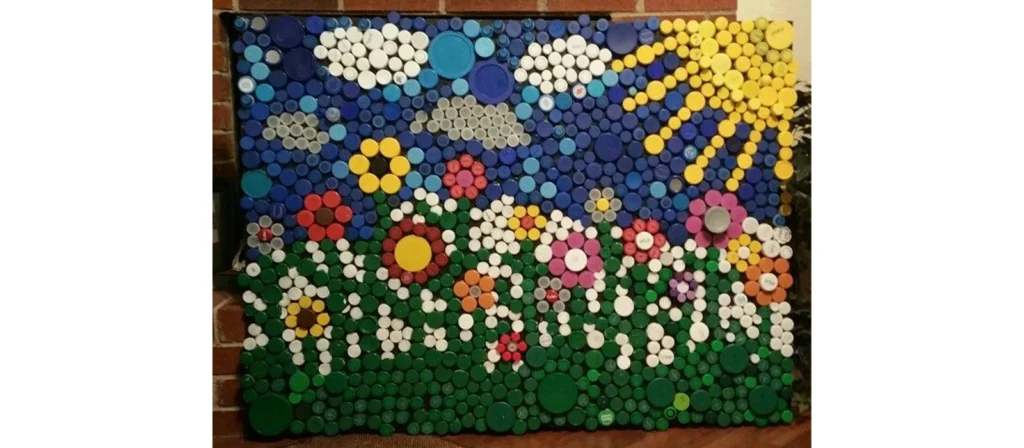
13. Bottle Cap Mosaics
This preschool craft is perfect for introducing the concept of reusing materials. The result is a vibrant, textured artwork made entirely from collected plastic bottle caps.
Ages: 4–5
Materials: Assorted clean plastic bottle caps (various colors), large sheets of cardboard or plywood, strong non-toxic glue, and paint for background design (optional).
Steps:
- Ask families to collect and bring in clean bottle caps ahead of time. Sort them by color.
- Decide on a simple design or image (a flower, a rainbow, a fish).
- Draw the outline on the cardboard or plywood.
- Have children glue caps inside the design, arranging them by color.
- Leave the mosaic flat until completely dry.
Safety Tip: Use only non-toxic glue and supervise so caps don’t end up in mouths.
Why It Works: This preschool craft encourages recycling awareness while building color recognition and spatial planning skills. It can also become a striking display in the school hallway.

14. Cardboard Castles
A collaborative preschool craft that transforms large cardboard boxes into a play castle. It’s fantastic for both creative building and imaginative role play afterward.
Ages: 4–5
Materials: Large cardboard boxes, child-safe scissors, tape, paint, brushes, and scrap fabric for flags or curtains.
Steps:
- Collect large, clean cardboard boxes — appliance boxes are ideal.
- Cut out windows and doors (adults should handle this step).
- Let children paint the walls with stone patterns, shields, or vines.
- Add fabric scraps for flags, curtains, or banners.
- Once dry, arrange the castle in a corner for pretend play.
Safety Tip: Cardboard edges can be sharp; tape them over before children play inside.
Why It Works: This preschool craft combines teamwork, engineering skills, and creative art. Children get to build something they can use afterward in imaginative play.
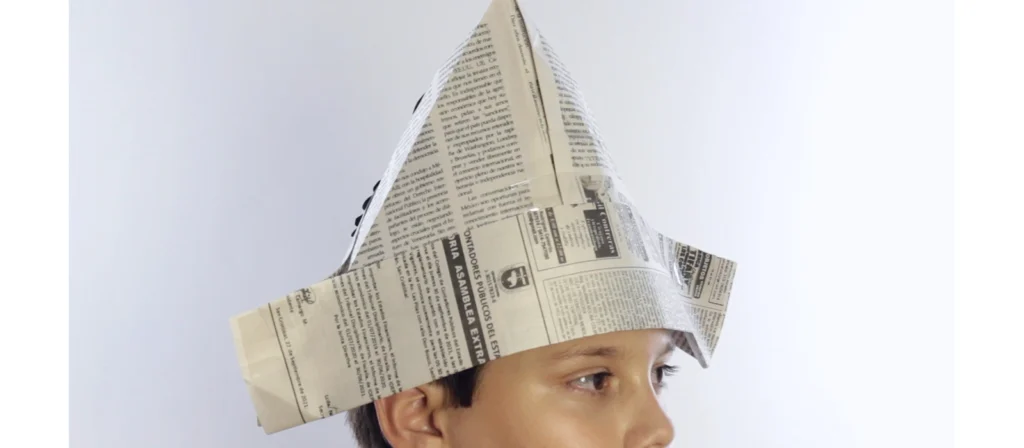
15. Newspaper Pirate Hats
A quick and budget-friendly preschool craft that sparks dramatic play instantly.
Ages: 3–5
Materials: Old newspapers, tape, stickers or markers for decorating.
Steps:
- Lay out a full sheet of newspaper.
- Fold it in half to make a large rectangle.
- Fold the top corners down toward the center to create a triangle at the top.
- Fold the bottom edges up to form the brim of the hat.
- Decorate with stickers, markers, or paper “pirate logos.”
Safety Tip: Make sure the hats fit loosely so they’re comfortable to wear.
Why It Works: This preschool craft introduces basic folding skills, following instructions, and imaginative role play in one activity.
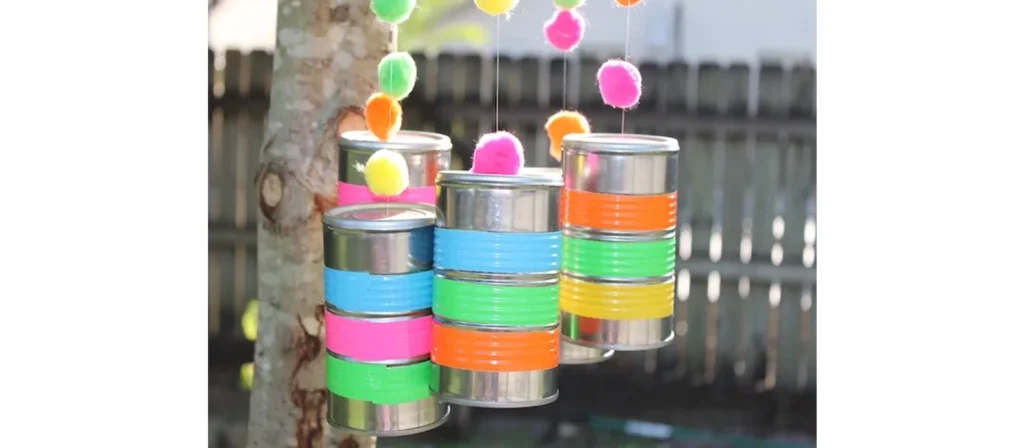
16. Tin Can Wind Chimes
A preschool craft that turns old tin cans into beautiful outdoor decorations, perfect for hanging near the playground.
Ages: 4–5
Materials: Empty clean tin cans (edges smoothed), acrylic paint, paintbrushes, yarn or string, small metal washers or beads for chimes, hammer, and nail (for adults to make holes).
Steps:
- Adults punch holes in the bottom of each can for attaching the chime strings.
- Let children paint the cans in bright colors and patterns.
- Thread yarn or string through the holes, attaching washers or beads that will clink together in the wind.
- Tie the strings securely and hang the chimes outside.
Safety Tip: Only adults should handle the hammer and nail. Check that all edges are smooth to prevent cuts.
Why It Works: This preschool craft promotes upcycling and introduces sound exploration. Children can listen to how the chimes change in different winds.
🤝 Group & Collaborative Crafts
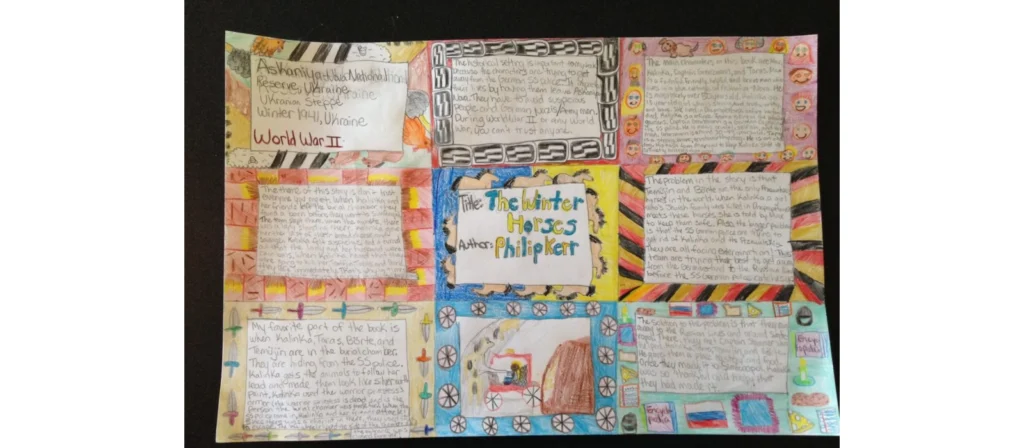
17. Classroom Story Quilt
This preschool craft turns individual art pieces into one large, collaborative classroom quilt — a perfect long-term display project.
Ages: 4–5
Materials: Felt or fabric squares (about 20–25 cm each), fabric markers or paint, fabric glue, large backing fabric or old sheet, and optional ribbons for edging.
Steps:
- Give each child a fabric square and let them decorate it with fabric markers or paint. Themes could include “my favorite animal” or “my family.”
- Once all squares are dry, arrange them on a large backing fabric.
- Help children glue their squares into place, explaining how each piece is part of the whole.
- Add ribbons or extra fabric strips to frame the quilt edges.
- Hang the finished quilt in the classroom or hallway.
Safety Tip: Use non-toxic, washable fabric paints, and supervise to prevent paint spills on clothing.
Why It Works: This preschool craft teaches teamwork and the idea that everyone’s contribution matters. It also becomes a long-lasting visual reminder of the class community.
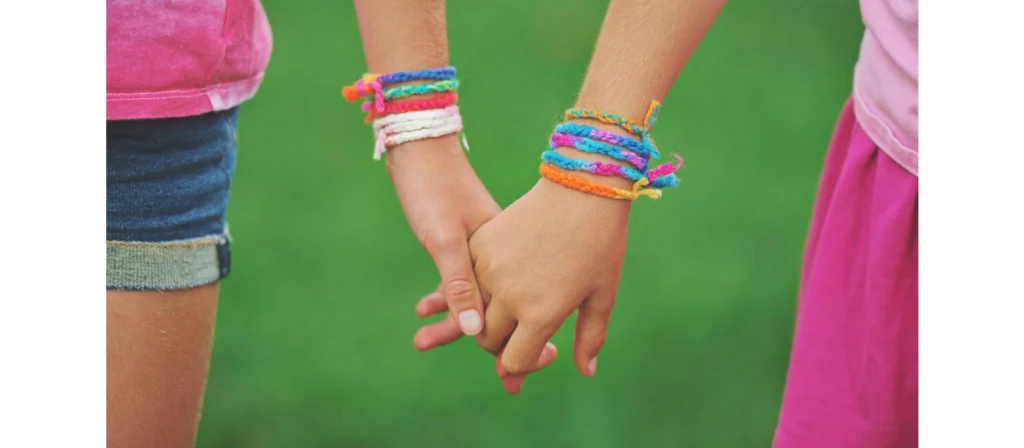
18. Friendship Bracelets Exchange
A simple but powerful way to build connection between classmates.
Ages: 4–5
Materials: Colorful yarn, beads with large holes, safety scissors.
Steps:
- Cut yarn into lengths suitable for small wrists.
- Show children how to thread beads onto the yarn.
- Encourage them to choose colors or beads they think their partner would like.
- Tie the bracelets and have children give them to one another.
Safety Tip: Use large beads to avoid choking hazards, and supervise bead threading.
Why It Works: This preschool craft encourages thoughtfulness and strengthens social bonds. It also develops fine motor coordination through threading.
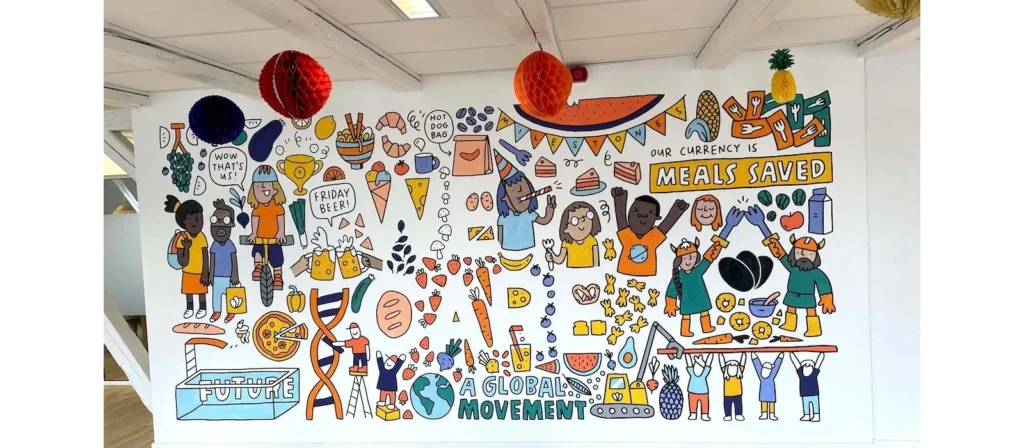
19. Collaborative Mural Painting
One of the most visually impactful preschool crafts. The whole class works together on a giant mural that can cover an entire wall or long sheet of paper.
Ages: 3–5
Materials: Large roll of butcher paper, washable paints, brushes, sponges, stencils, and aprons.
Steps:
- Tape the butcher paper along a wall or spread it on the floor.
- Pick a theme — “Under the Sea,” “Our Neighborhood,” or “In the Garden.”
- Let children work freely within the theme, adding their own details.
- Once dry, display the mural where parents and visitors can see it.
Safety Tip: Make sure the area is protected with drop cloths to avoid paint on walls or floors.
Why It Works: This preschool craft builds a sense of ownership and pride in group accomplishments. It’s also a great conversation starter during parent visits.
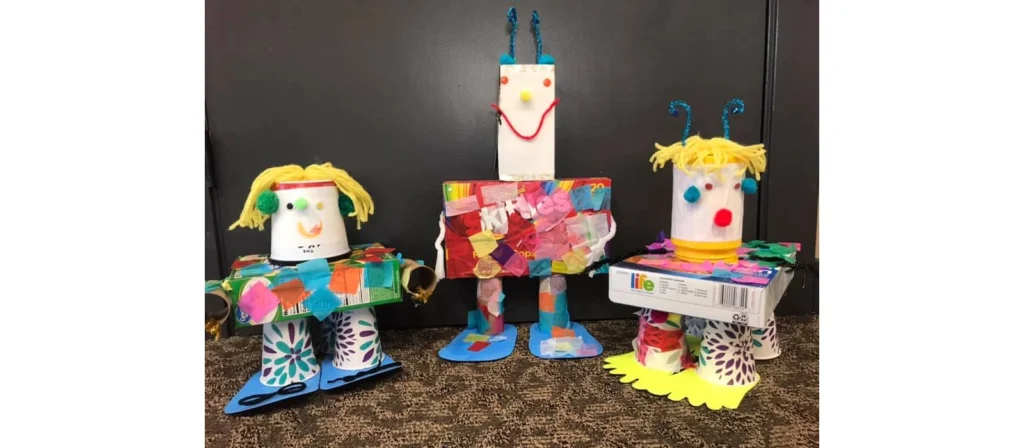
20. Community Recycled Art Show
A preschool craft project that extends beyond the classroom. Children create art from recycled materials and then display it for families or the local community.
Ages: 4–5
Materials: Clean recycled items (bottles, boxes, cardboard, fabric scraps), glue, paint, markers, and display tables or shelves.
Steps:
- Collect safe, clean recyclables over a few weeks.
- Let children choose materials and create sculptures or collages.
- Help them write a small “artist card” with their name and the title of their work.
- Organize a small “gallery day” where parents and community members can come see the art.
Safety Tip: Avoid materials with sharp edges or small detachable parts that could be swallowed.
Why It Works: This preschool craft teaches sustainability, creativity, and presentation skills. It gives children a platform to proudly share their work with others.
Safety Tips for Preschool Crafts
In all my years visiting preschools and working with teachers, one thing has been consistent: no matter how creative or exciting the activity, safety has to come first. Preschool crafts can be full of small parts, sticky glue, sharp edges, or messy liquids — all of which are part of the fun, but also require careful planning.
Here are the safety guidelines I recommend for any preschool setting:
1. Choose Non-Toxic, Child-Safe Materials
Always check labels for “AP Certified Non-Toxic” or equivalent safety marks. Paints, glues, and markers designed for older children or adults may contain chemicals unsafe for preschoolers. Avoid glitter made of fine metal or plastic dust, as it can irritate eyes and skin.
2. Supervise All Cutting Activities
Even with child-safe scissors, supervision is essential. For very young children (3–4 years old), pre-cut shapes whenever possible. If cutting is part of the learning, demonstrate proper grip and cutting technique slowly before letting them try.
3. Watch Out for Choking Hazards
Small beads, buttons, marbles, and sequins are wonderful for crafts but can be dangerous. Keep these for older preschoolers (4–5 years old) and ensure they’re used only at a table under close watch.
4. Secure Loose Items and Liquids
Tape down table covers to avoid slipping. Keep lids on glue and paint when not in use. Wipe up any spills immediately to prevent slipping hazards.
5. Provide Protective Clothing
Aprons or oversized T-shirts save children’s clothes (and parents’ laundry). Some materials, like acrylic paint, won’t wash out easily, so plan ahead.
6. Maintain a Clean Workspace
Have wet wipes, hand sanitizer, and a trash bin within arm’s reach. Ending an activity with sticky hands and no way to clean up is a recipe for frustration.
7. Model Safe Behavior
Children learn by imitation. Show them how to hold scissors, how to pass materials carefully, and how to clean up without rushing.
In short, safety in preschool crafts is not about removing every risk — it’s about managing it smartly. The goal is to let children explore materials and tools in a controlled way, so they gain confidence without getting hurt.
Conclusion
Preschool crafts aren’t just “something to keep little hands busy.” They’re moments where children discover textures, practice problem-solving, learn to cooperate, and express feelings they can’t yet put into words. A well-chosen craft can light up a classroom, turn a rainy morning into an adventure, and create keepsakes that families treasure for years.
At XIHA Furniture, we’ve seen firsthand how a thoughtfully designed learning space can make these activities even more impactful. The right tables, safe storage, and child-sized seating give children the freedom to explore their creativity comfortably and safely. Our goal is the same as every teacher’s — to give preschoolers a space where learning and joy meet.
Whether you’re planning seasonal projects, eco-friendly creations, or collaborative masterpieces, remember that each preschool craft is more than an art project — it’s a step in a child’s growth. And with the right environment, those steps become even stronger.

